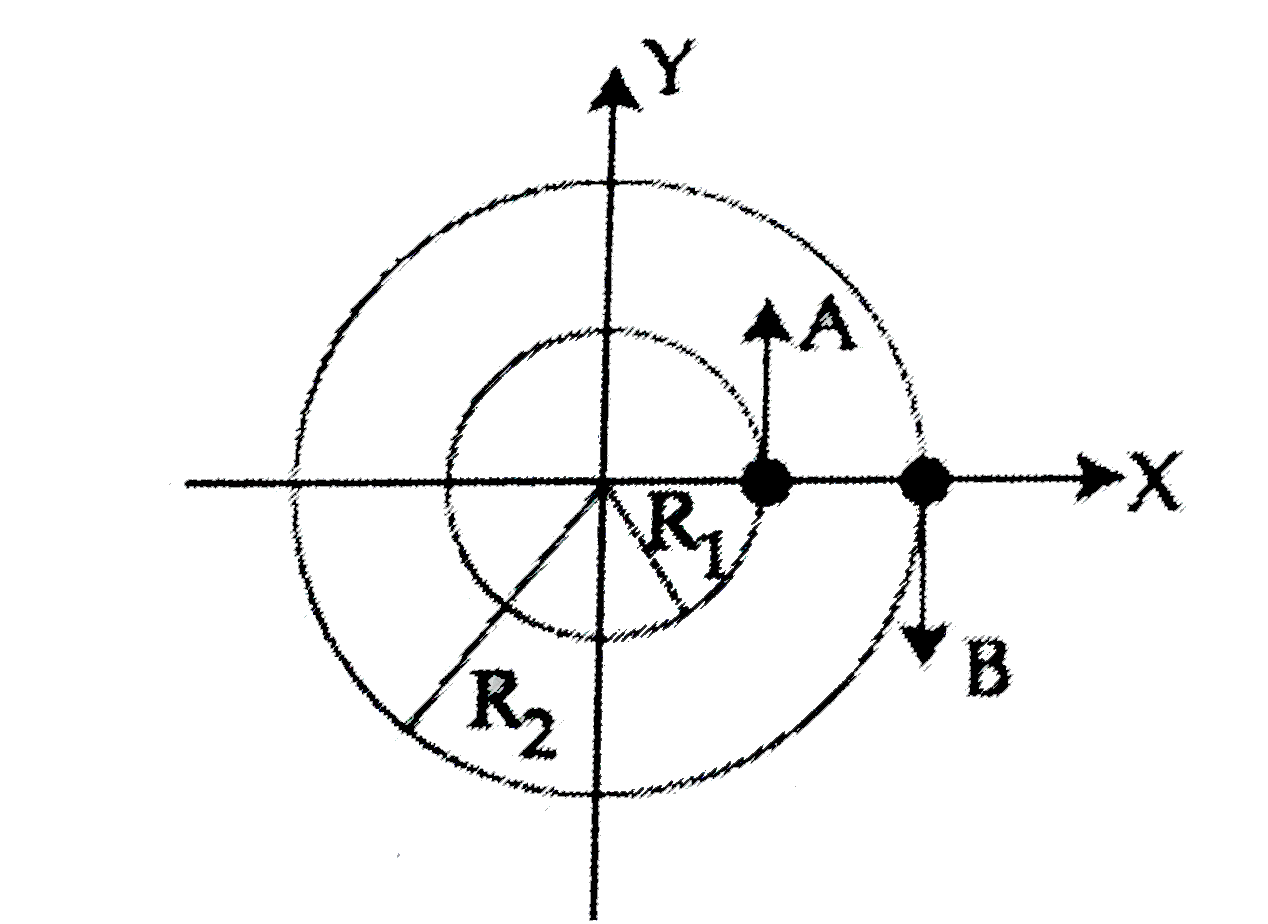Two particles A,B are moving on two concentric circles of radii R1) and R2 with equal angular speed ω. Att=0,their positions and direction fo motion are shown in the figure :

ω(R2−R1)ˆi
ω(R1−R2)ˆi
−ω(R1+R2)ˆi
ω(R1+R2)ˆi
The correct Answer is:A
t=π2ω

→vA=ωR1(−ˆi)
→vB=ωR2(−ˆi)
→vA−→vB=ωR1(−ˆi)−ωR2(−ˆi)
Similar Questions
दो कण, A एवं B, बराबर कोणीय वेग ω से R1 एवं R2 त्रिज्या के दो समकेन्द्रित वृत्तों पर चल रहे है। समय t=0 पर उनकी गति की दिशायें एवं स्थितियों को चित्र में दिखाया गया है t=π2ω पर सापेक्ष वेग (→vA−→vB) होगा

View SolutionTwo cars having masses m1andm2 move in circles of radii r1andr2 respectively. If they complete the circle is equal time the ratio of their angular speeds is ω1ω2 is
View SolutionTwo particles A,B are moving on two concentric circles of radii R_1 and R_2 with equal angular speed omega . At t=0 ,their positions and direction of motion are shown in the figure. The relative velocity vecV_a-vecV_b at t=pi//2omega is given by :
View SolutionTwo particles A and B are moving in uniform circular motion in concentric circles of radii rA and rB with speed uA and uB respectively. Their time period of rotation is the same. The ratio of angular speed of a to that of B will be:
View SolutionTwo racing cars of masses m1 and m2 are moving in circle of radii r1 and r2 respectively, their speeds are such that each make a complete circle in the same time t. The ratio of the angular speed of the first to the second car is
View SolutionTwo particles A and B are revolving with constant angular velocity on two concentric circles of radius 1m and 2m respectively as shown in figure. The positions of the particles at t = 0 are shown in figure. The positions of the particles at t=0 are shown in figure. if mA=2kg,mB=1kg and →PA and →PB are linear momentum of the particle then what is the maximum value of ∣∣→PA+→PB∣∣ in kg-m/sec in subsequent motion of two particles.

View SolutionThe orbital radii of the two satellites, respectively r_1 And r_2 (r_1 < r_2) Is, and if their angular momentum is equal then what will be their centrifugal acceleration?
View SolutionTwo circles of radii r1andr2, are both touching the coordinate axes and intersecting each other orthogonally. The value of r1r2 (where r1>r2) equals -
View Solution
